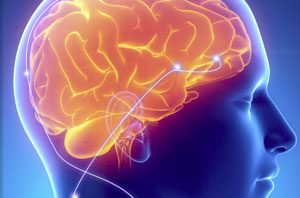In the United States, more than 200,000 people are affected each year from Parkinson’s disease. As much of the general public knows, this disease is a debilitating neurodegenerative disease that often is diagnosed after the age of 40. That being said, what many people don’t know is that the symptoms that they associate with Parkinson’s disease may not be from the actual disease itself, but rather the medications individuals are taking. Possibly the most recognizable characteristic of advanced Parkinson’s is dyskinesia, or involuntary motor movement that can been seen as body tremors, rocking back and forth, or just the inability to sit still. Surprisingly, this hallmark of the disease often is the result of high doses of drugs derived from the compound called L-DOPA.
What We Know about Parkinson’s
Truly, the symptoms in the disease’s original state are slowness of voluntary movements, a shuffling gait, abnormal stiffness, and poor balance. These are the result of the death of dopaminergic neurons in an area of the brain called the substantia nigra. In Parkinson’s disease, the leading theory is that this cell death is caused by the build-up of an activated protein called Alpha-synuclein. Little is known about why this activated protein builds up in dopaminergic neurons, but extensive research is being done on kinase dysfunction that could lead to the buildup and subsequent cell death. Knowing that activated Alpha-synuclein is likely the cause for the dopaminergic cell death in Parkinson’s disease, there is also clinical research focused on targeting the Alpha-synuclein, including vaccines and compounds that can break down the protein.
In past and many current treatments for Parkinson’s disease, the goal has been to supplement dopamine for the brain to try and compensate for the death of these neurons. Dopamine drugs, including L-DOPA, serve this purpose well. This drug has the ability to flood the brain with dopamine, but unfortunately, patients taking high doses of this drug have to live with the side effects such as the inability to sit still.
Where Deep Brain Stimulation Fits in
This is where deep brain stimulation (DBS) may be the key for some Parkinson’s patients. The goal of this procedure is to regulate the “on/off” characteristics of the disease and help reduce dyskinesia. In DBS, a thin electrode is implanted into the brain, targeting motor circuits that are not functioning properly. Small electrical pulses from a device similar to a cardiac pacemaker are then used to stimulate a small brain region and block the signals that cause some Parkinson’s symptoms and symptoms from L-DOPA drugs. DBS may not be the answer for everyone, but studies have shown that is works best for patients who respond well to dopamine drugs but just suffer from their side effects. Just as with any other medication or procedure, this treatment should be approached with realistic expectations and understanding of the risks associated.
For me, as a student infatuated with research and its clinical applications, this is extremely exciting; but I think this also should be exciting for everyone. Deep brain stimulation may be a way for people suffering from Parkinson’s to experience the relief from drugs such as L-DOPA, but also live a life not hindered by its nasty side effects such as dyskinesia. With this brain treatment, before research is developed enough to effectively target the Alpha-synuclein and find a cure, there is a possibility that people with Parkinson’s may have the ability to be just another face in the crowd.
